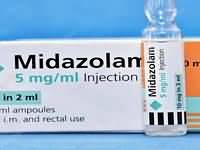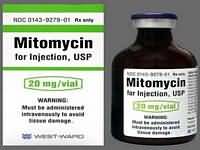Midazolam

CLINICAL USE
Benzodiazepine:Sedation with amnesia in conjunction with local anaesthesia, premedication, induction
DOSE IN NORMAL RENAL FUNCTION
See SPC for dosing guidelines
PHARMACOKINETICS
Molecular weight :325.8 (362.2 as hydrochloride) %Protein binding :96–98 %Excreted unchanged in urine : <1 Volume of distribution (L/kg) :0.7–1.2half-life – normal/ESRD (hrs) :2–7/Unchanged DOSE IN RENAL IMPAIRMENT
GFR (mL/MIN)
20 to 50 : Dose as in normal renal function 10 to 20 : Dose as in normal renal function <10 : Use sparingly and titrate according to response. Only bolus doses, not continuous infusion DOSE IN PATIENTS UNDERGOING RENAL REPLACEMENT THERAPIES
CAPD :Unlikely to be dialysed. Dose as in GFR <10 mL/min HD :Not dialysed. Dose as in GFR <10 mL/min HDF/high flux :Unknown dialysability. Dose as in GFR <10 mL/minCAV/VVHD :Unknown dialysability. Dose as in normal renal function IMPORTANT DRUG INTERACTIONS
Potentially hazardous interactions with other drugsAntibacterials: concentration increased by erythromycin, clarithromycin, telithromycin and quinupristin/dalfopristin (profound sedation); metabolism possibly accelerated by rifampicin Antifungals: concentration increased by itraconazole, ketoconazole, posaconazole and fluconazole (prolonged sedative effect)Antipsychotics: increased sedative effects; increased risk of hypotension, bradycardia and respiratory depression when parenteral benzodiazepines are given with IM olanzapineAntivirals: atazanavir, efavirenz, nelfinavir, saquinavir, ritonavir, amprenavir and indinavir increase risk of prolonged sedation with midazolam, avoid with atazanavirCiclosporin: in vitro studies suggested that ciclosporin could inhibit the metabolism of midazolam. However, blood ciclosporin concentrations in patients given ciclosporin to prevent graft rejection were considered too low to result in an interactionSodium oxybate: enhanced effects of sodium oxybate – avoid ADMINISTRATION
Reconstition
_ Route
IV, IM Rate of Administration
1–10 mL/hour according to response Comments
Can be used undiluted Compatible with glucose 5%, sodium chloride 0.9% OTHER INFORMATION
Protein binding of midazolam is decreased in ERF; hence more unbound drug is available to produce CNS effects, so a decrease in dose is recommendedCSM has received reports of respiratory depression, sometimes associated with severe hypotension, following intravenous administrationCaution when used for sedation in severe renal impairment especially when used with opiates and/or neuromuscular blocking agents – monitor sedation and titrate to responseIncreased CNS sensitivity in patients with renal impairmentOne study reports midazolam as having a sieving coefficient = 0.06 and unlikely to be removed by haemofiltration.
See how to identify renal failure stages according to GFR calculation
See how to diagnose irreversible renal disease
Home









